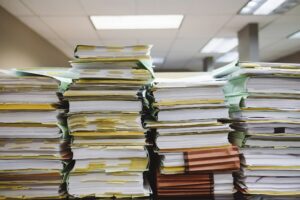I have a picture floating somewhere around my mother’s house from when I was two years old and in nursery school. In that picture, I was wearing a hat made out of newspaper.
In every classroom, there is always that prankster who would annoy the substitute teacher by throwing paper airplanes at the teacher’s back.
The common elements among these two things are kids and folded paper. Origami is the Japanese art of paper folding, and given that paper is everywhere and there are many different levels of difficulty in origami, this paper folding technique can provide frugal fun for the whole family.
There are many sites on the internet devoted to teaching origami, like Origami for Kids and Origami Instructions. The options are unlimited; start off with the basics, and as your children become more proficient at this art, they can advance to more challenging projects.
Most origami instructions assume you are using specially bought Origami papers. I don’t suggest using these, if only because they are a waste of money. Origami paper is unique in that it is a perfect square, unlike our usual rectangular A4 papers.
To make your own perfect square paper is simple.
Take a rectangular piece of paper and fold over one corner so that it makes a triangle, with one leg evenly touching the opposite edge of the paper.
You’ll end up with something that looks like this.
Fold the rest of the paper over the triangle, so you end up with a thin rectangle along the top edge of your triangle.
You’ll want to either cut or tear off this rectangle. I usually just score along the crease with my fingernails and then tear it off, but scissors work fine as well.
You just open up the triangle that is left and you are left with a perfect square, perfect for all sorts of origami projects.
This morning, Lee and I made an Origami paper cup. It was a simple enough project to do with a 2.5 year old, and he enjoyed drinking from his cup when it was ready.
The finished cup.
Here it is, in use.
If you’ve noticed, this paper isn’t pure white. I actually used scrap paper to make it.
I hope you also make use of scrap paper in your house and don’t buy fresh, white paper for this type of use. Use can the back of printed papers, used envelopes or packing paper for writing. When both sides are printed, leaving you with no clean sides for writing, like junk mail, newspapers, magazines, or paper that you’ve already recycled, you can recycle that paper further and use it for projects such as this, paper mache, and many other crafts. This not only lets use have have free materials for projects, recycling is also an environmentally sound thing to do.
Do you recycle paper in your home? What do you do with paper once it has already been used?
Ever do origami? What do you know how to make out of folded paper?








